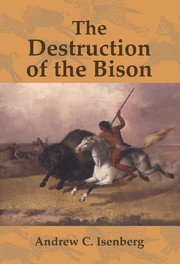2 - The Genesis of the Nomads
Published online by Cambridge University Press: 05 August 2012
Summary
In 1811, the naturalist John Bradbury paused near the juncture of the Grand and Missouri rivers and remarked upon the abundance of honeybees there. Bradbury, an English botanist accompanying a group of American fur traders up the Missouri, was astounded that a European insect could be found in great numbers in the trans-Mississippi West. He wrote, “Even if it be admitted that they were brought over soon after the first settlement took place” – indeed, bees arrived in Virginia in the 1620s – “their increase since appears astonishing, as bees are found in all parts of the United States; and since they have entered upon the fine countries of the Illinois and Upper Louisiana, their progress westward has been surprisingly rapid.” Bradbury believed that bees had not crossed the Mississippi River until 1797, although later in the nineteenth century some writers claimed that Madame Marie Thérèse Chouteau kept bees in her St. Louis garden in 1792. In any event, as Bradbury wrote, “They are now found as high up the Missouri as the Maha nation, having moved westward to the distance of 600 miles in fourteen years.”
Indians of the Missouri watershed such as the Omahas, or the Mahas as Bradbury called them, regarded honeybees as the vanguard of European expansion. Bradbury wrote, “Bees have spread over this continent in a degree, and with a celerity so nearly corresponding with that of the Anglo-Americans, that it has given rise to a belief, both amongst the Indians and the Whites, that bees are their precursors, and that to whatever part they go the white people will follow.”
- Type
- Chapter
- Information
- The Destruction of the BisonAn Environmental History, 1750–1920, pp. 31 - 62Publisher: Cambridge University PressPrint publication year: 2000



